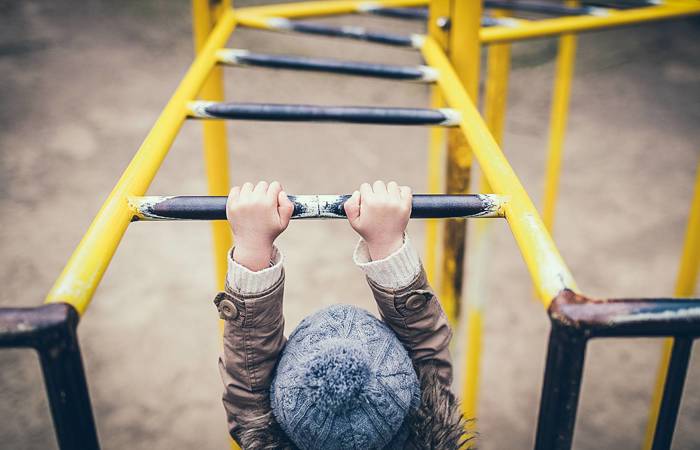Like what you see?
Sign up to receive more free parenting advice.
Thank you for subscribing to our newsletter!
Early Learning

Credit: iStock.com/lisegagne
Pretend or make believe play is a cornerstone of a child's cognitive development. Professor of Early Childhood Sheila Degotardi answers the questions: Why is pretend play important and how can we support it?
Most of us have seen make believe play - a child pretends to be mum or dad cooking for baby, a firefighter racing to an emergency, or a superhero on the quest to save the world! When children pretend, they use their imagination to re-enact familiar experiences and create stories. They suspend reality while they play, acting ‘as if’ they, or an object, is something else - “I am not Zali, I am the mum” or “It’s not a bucket, it’s my helmet”.
While it is easy to overlook the importance of this type of play, the ability to pretend is a cornerstone of children’s cognitive development. It represents an important shift in young children’s thinking skills whereby their play is guided by their thoughts and imagination. Instead of relying on their direct experience with events or objects, they are now able to consciously access memories, ideas and thoughts, and they use this ability to frame their play.
Why is pretend play important?
Research has repeatedly demonstrated the benefits of pretend play. Children who engage in more elaborate pretend play in their preschool years have been found to be more creative and innovative some years later, and encouraging pretend play helps children access their memories to solve problems1.
Pretend play also prompts children to use their developing language and social skills and has been linked to literacy and language development as well as social competence.
While acknowledging the benefits of many diverse types of play, the evidence certainly shows that pretend play has a significant role in fostering young children’s learning and development.
While most of this evidence comes from preschool aged children, pretend play does not just suddenly start when children turn three. So, when and how do children start to pretend? And what can parents and educators do to support and encourage this important kind of play?
Pretend play also prompts children to use their developing language and social skills and has been linked to literacy and language development as well as social competence.Professor Sheila Degotardi
Stay up to date with the latest news and articles from First Five Years
Thank you for subscribing to our newsletter!
When do children start to pretend?
It was originally thought that pretend play was dominant in preschool aged children. However, we now know that pretend play emerges during toddlerhood. Consider 15-month-old Tania, who picks up her soft tiger toy and says “Raargh!”, or 17-month-old Dong who stirs an empty bowl with a spoon and then, with a grin, puts the spoon into his mouth. Both toddlers are acting ‘as if’ – with Tania, it is ‘as if’ the toy tiger is real, and with Dong, it is ‘as if’ he is eating from the bowl. These early pretend behaviours usually reflect familiar experiences the child – Tania may be re-enacting a favourite story, and Dong is re-enacting his everyday mealtime event. No matter how familiar, these behaviours herald the beginning of pretend play, and show that toddlers are drawing on their memories and imaginations when they play.
An Australian study discovered evidence of pretend play in infants’ first year2. This study observed infants in three-month intervals between the ages of 8 and 17 months as they and their parents played with provided play materials. The researcher rated the infants’ observed level of pretend play from simple to complex.
Simple pretense, such as the examples given above, was clearly observed at the youngest age. By 17 months of age, toddlers were all participating in more complex sequences of pretend play, such as bathing and putting a doll to bed, mixing and cooking cakes, or imagining that a box was a bus and taking their teddies to the shops. Pretend play, in this study, was firmly established by 18 months of age.
Supporting toddlers’ pretend play.
As well as noting that pretend play was evident earlier than expected, the study made two further interesting observations. The first was the effect of the provided play materials on the play.
Each set of play materials included familiar items such as a spoon, various bowls and tubs, small blankets, dolls, soft toys, cars and small figurines. These items lend themselves to pretend play, firstly because parents and children can use the familiar items to ‘act out’ everyday experiences such as cooking, eating and drinking, and secondly, because the inclusion of additional items encouraged the use of the imagination to transform that item into a make-believe object.
The second observation was that the parents consistently showed a higher level of pretend play than their infants. As the infants’ play became more complex with age, the parents also increased the complexity of their play. By modelling more complex pretend play behaviours, the parents, albeit unconsciously, seemed to be teaching their infants how to pretend.
That adult’s play an important role in encouraging early pretense has been noted in other studies. In particular, parents have been noted to use exaggerated actions and emotional expressions and phrases such as “just pretend” and “not real” when engaging in pretend play with toddlers3. These playful behaviours appear to signal to the toddler that “this is play – it is not real”, and the toddlers are likely to play along.
1. Whitebread, D., et al., The role of play in children's development: A review of the evidence. 2017.
2. Morrissey, A.-M., Scaffolding, analysis and materials: Contributing factors in an unexpected finding of advanced infant/toddler pretend play? Journal of Early Childhood Research, 2014. 12(2): p. 195-213.
3. Lillard, A.S. and D.C. Witherington, Mothers' behavior modifications during pretense and their possible signal value for toddlers. Developmental Psychology, 2004. 40(1): p. 95-113.
Here are some tips for encouraging pretend play in very young children:
- Provide simple materials like bowls, cups, spoons, and pair these with soft toys, dolls and figurines.
- Get involved in toddlers’ play, and model pretend actions and simple play sequences. By smiling and exaggerating pretend actions, you give toddlers the message that ‘this is pretend’.
- Encourage toddlers to use their bodies to make-believe – for example, wobbling like a jelly, or bouncing like a kangaroo. By doing this, you are helping toddlers to act ‘as if’.
- Use language to label pretend actions “Let’s pretend to …” and “Are you eating a cake – yum, yum”. Encourage toddlers to use pretend play sequences in their play with figurines or soft toys – “teddy’s getting in the bus – where shall we drive to? What will he buy at the shops?”.








